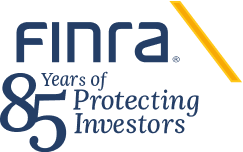On March 16, 2023, FINRA published responses to frequently asked questions concerning the MMTLP corporate action and trading halt (March 16, 2023, MMTLP FAQ). In that corporate action, the issuer decided that MMTLP shares would be cancelled and investors in those shares would receive a distribution of shares of Next Bridge Hydrocarbons, Inc. (Next Bridge). FINRA has continued to receive questions regarding the circumstances surrounding these events. In particular, some have questioned the level of short selling in MMTLP and suggested that there was a substantial amount of “counterfeit shares.” Although it is not clear what is meant by the term “counterfeit shares,” it has been used in social media when discussing “naked” short selling in a security and failures-to-deliver (FTDs). Some investors have expressed concern that, even though their brokerage account statements include shares of Next Bridge in their account, these shares may not have actually been delivered to their broker-dealer.
AMC has already stated that they have enough liquidity to stay in business until the end of fiscal year 2022 and yet Market Makers, Prime Brokers, Hedge Funds, continue to short the stock on purpose to bankrupt the company and completely disregard the failure to delivers and blatant manipulation with minimal transparency to retail investors and they are getting away with it everyday. Please help
2025 FINRA Annual Regulatory Oversight ReportThe Consolidated Audit Trail (CAT) topic of the 2025 FINRA Annual Regulatory Oversight Report (the Report) informs member firms’ compliance programs by providing annual insights from FINRA’s ongoing regulatory operations, including (1) regulatory obligations, (2) findings and effective practices, and (3) additional resources.SEC Rule 613 requires FINRA
FINRA Rule 2360(b)(23)(C) requires member firms conducting transactions in exchange-listed options to establish fixed procedures for allocating options exercise assignment notices to short options positions in their customer accounts. Firms may elect to allocate exercise assignment notices on: (1) a “first in-first out” basis (FIFO); (2) a random selection basis; or (3) another equally random
To: FINRA
Re: FINRA Regulatory Notice #22-08
To Whom it May Concern:
I am firmly opposed to any imposed regulations or restrictions of the open market buying and selling of leveraged and inverse investment products.
Investing in inverse products is no different than shorting a stock. Inverse products allow investors to invest in a stock or a segment of the market or a market index that is in
In conjunction with other self-regulatory organizations and the Securities Industry/Regulatory Council on Continuing Education, FINRA administers the continuing education (CE) program for the securities industry. CE consists of two mandatory programs: the Regulatory Element and the Firm Element.
The ways in which people communicate have changed with advancements in technology, and so have the tactics of “cold calling” boiler rooms. Today’s boiler rooms go beyond the telephone to contact potential investors, including pitching through messaging apps and social media. Regardless of the method of contact, the scammer’s goal and many of the red flags are the same.
FINRA uses a combination of tools to reduce the risk of harm to investors by member firms and brokers they may hire that have a history of misconduct.
Background
FINRA is pleased to announce a new centralized, secure file transfer platform called fileX, which enables firms to programmatically send, track and receive files in one place. fileX significantly streamlines the process for submitting bulk filings to FINRA, provides additional options for downloading files from FINRA, and allows for seamless and secure authentication and authorization
I have been investing since 1994; and got first into stock trading. However; after 2007, and especially when there were more funds available after 2011; it opened up the possibility to take advantage of fast/big drops, or trade of commodities; through a derivative fund. Even if they go against you; the prospectus and history charts allow investors to make decisions on whether historic contango/
